I often rely largely on photos to give the clearest idea of a place – of what attracted me, what surprised me, what amused me, and even at times what alarmed or dismayed me – but when recalling impressions of Cuba, I find that more explanation, or analogy, is needed.
There is a phenomenon I have noticed in visiting cities in developing countries. In my first sight of such places, I see mostly the roughness. This is quickly replaced, once I get feet on the ground, by the fascinating complexity and the unique mood and feel of the city. I noticed this markedly in Yangon, Myanmar.
At first I saw only the chaos and dirtiness of the streets, but just as soon as I started walking, these images faded. When I returned to the city three weeks later, my first thought was how unappealing the city was. Having traveled along the Irrawaddy River, bicycled extensively through Mandalay and Bagan, walked from Kalaw to Inle Lake, my impressions of the country had evolved extensively in those weeks. But again, walking the streets replaced this even stronger initial impression with details and awareness, and with a sensitivity to the place that a view from a car window does not yield.
It was the same in Havana.
Spending a week sleeping in Centro, nearly every view of Havana was at street level. It was a fascinating place to explore. Crumbling walls and plaster, empty parcels of land filled with rubble, buildings faced with five stories of scaffolding interlaced with vines and trees indicating the many years since the reinforcement had been erected, and amid this all the hum and vitality of a busy population going about their daily lives. Endlessly interesting.
A few weeks later I again passed through Havana. I was on my way to Viñales for the last part of my visit to Cuba. I could not get out of Havana quickly enough.
I was seeing that first-impression ugliness; the decay, the layers of peeled paint, garbage and piled up residue of crumbling buildings. With feet on the ground one experiences the fascination, the strange beauty in the reality, even in the disintegration, and surely I’d have seen it again. But I wanted my last days in Cuba to be different. At that point I had explored my way through enough crumbling colonial architecture.
Cuban cities in general have a dilapidated, faded, crumbling aspect. Though wealth built the buildings, now woefully insufficient resources are available for maintenance.
Another analogy – in Mexico I marveled at the beautifully maintained buildings in Campeche. How, I wondered, was this possible?I learned that the answer had a couple of significant facets – first that the Mexican government provides all the materials and all the labor to maintain the look of the historic center of the city. There is a full time crew assigned to this task and they work year round, moving from street to street. When one cycle is done, another immediately starts. All this, of course, is significant, but another aspect explains even more. Every building in the central district is repainted every nine months.
Imagine now the buildings in Cuba which are subject to similar climatic challenges – the heat, the corrosive salt air, and even at times hurricanes – yet have gone many years with no paint, nor much maintenance of any kind. The architectural treasures of Cuba are evident, but much has already been lost, and more will be.
For the sake of clarity, I need to mention the Cuban cities I visited – first Havana (approximate population 2.5 million in 2010), then Santiago de Cuba (425,000), Camagüey (305,000), Cienfuegos (150,000), Santa Clara (205,000) and Pinar del Rio (140,000 in 2004).
What all these cities have in common is that their original city centers include impressive examples of colonial architecture typically showing Spanish, French, and German influences. The cities – Havana in particular – are stunningly eclectic with Neoclassical, Baroque, and Art Deco influences.
All too often the state of repair of these classic old structures is rather dismal.
And when you look closely, you see much more.
This type of disintegration is common, and dangerous.
There are a variety of reasons for this, but most of all these buildings were built by people with substantial power and funds. As the governing bodies in Cuba have changed over the years, the existence of this privileged class has all but ended, and with it the financial power (along with the attendant inequity implied) that created such evidence of wealth.
Without the resources of wealthy families and businesses available for property maintenance, the architectural treasures of Cuba have suffered. In 1980 responsibility for restoration of Havana Viaja had been given to two agencies:
City Historian’s Department of Architecture office
National Centre for Conservation, Restoration, and Museum studies (CENCREM).
In 1982, the historic center of Havana was given Unesco recognition. The same honor has since been accorded to the historic city centers of Cienfuegos (2005) and Camagüey (2008). With this Unesco World Heritage listing to help build tourism for Havana, there is now an ongoing effort to restore buildings in the old city and along the Malecón – the esplanade the borders the seawall on the north of the city.
Still, the task is daunting. And slow.— Derrumbe —
Meaning in English – breakdown, or collapse.
Throughout Cuba there were signs warning passersby to take care. Everywhere there were walls being held up with scrap wood.
Sometimes one wondered what was holding a building up.
And a building like this, clearly still inhabited, presents an extraordinarily risky situation, for people living in them, for pedestrians. Building collapses are said to be a frequent occurrence in Havana yet the consequences are seldom talked about. And even less often covered in the media. On every block in Centro, there were multi-story buildings surrounding a few standing walls and expanses of rubble.
In other places the rubble of the collapsed building had been cleared and good use was made of the cleared land.
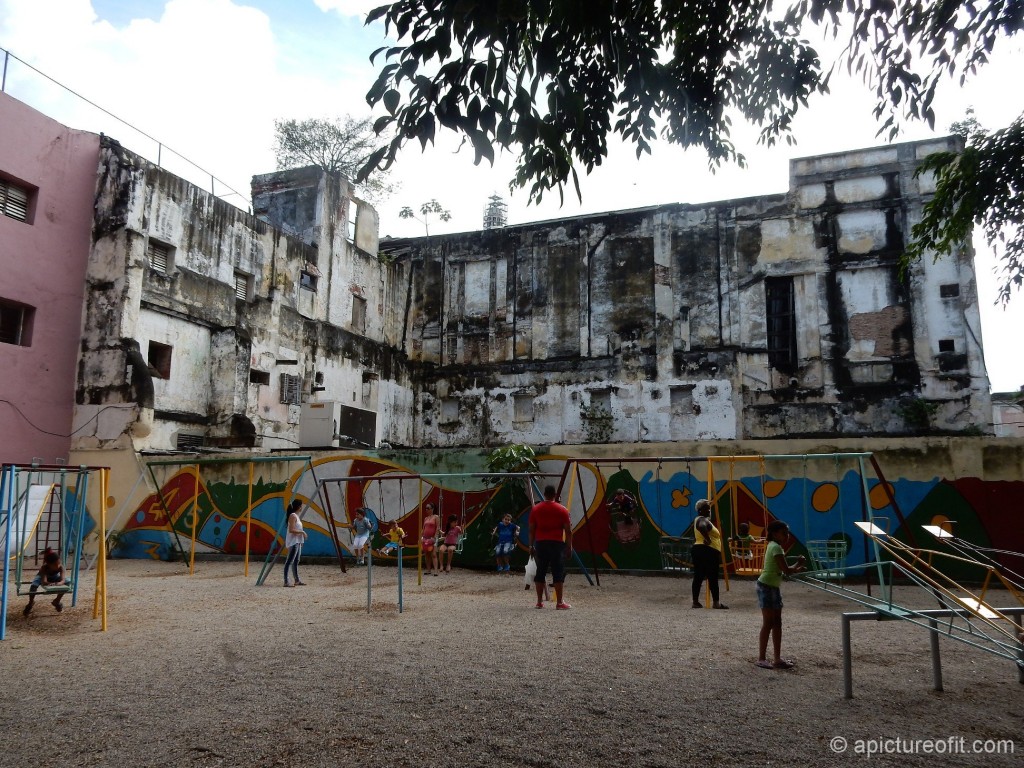
The transition area between Vieja and Centro - children's playground where once a colonial building stood.
Amid expanses of rubble, and disintegration there is much evidence of people making individual efforts to improve their properties.
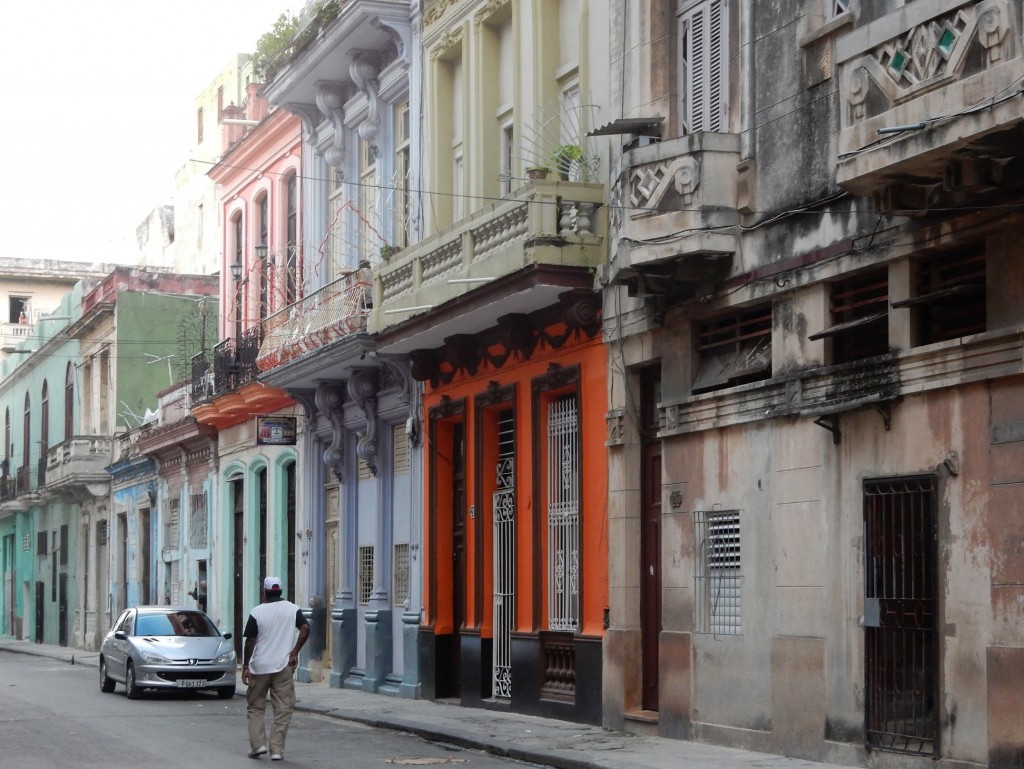
In the center of this block, each floor has been painted a different color. Fresh paint, each applied by a different owner.
I have looked here at the residential conditions primarily. Here I see what political tides have brought, the conditions that the people have struggled with, and endured. While efforts are being made to restore structures of historical significance, it is in these smaller details that I see the real spirit and soul of Cuba.
It is in walking these rough streets, under the shadows of rubble and crumbling plaster, that I find the sense of place that I seek as a traveler.
[See more of Havana Centro]

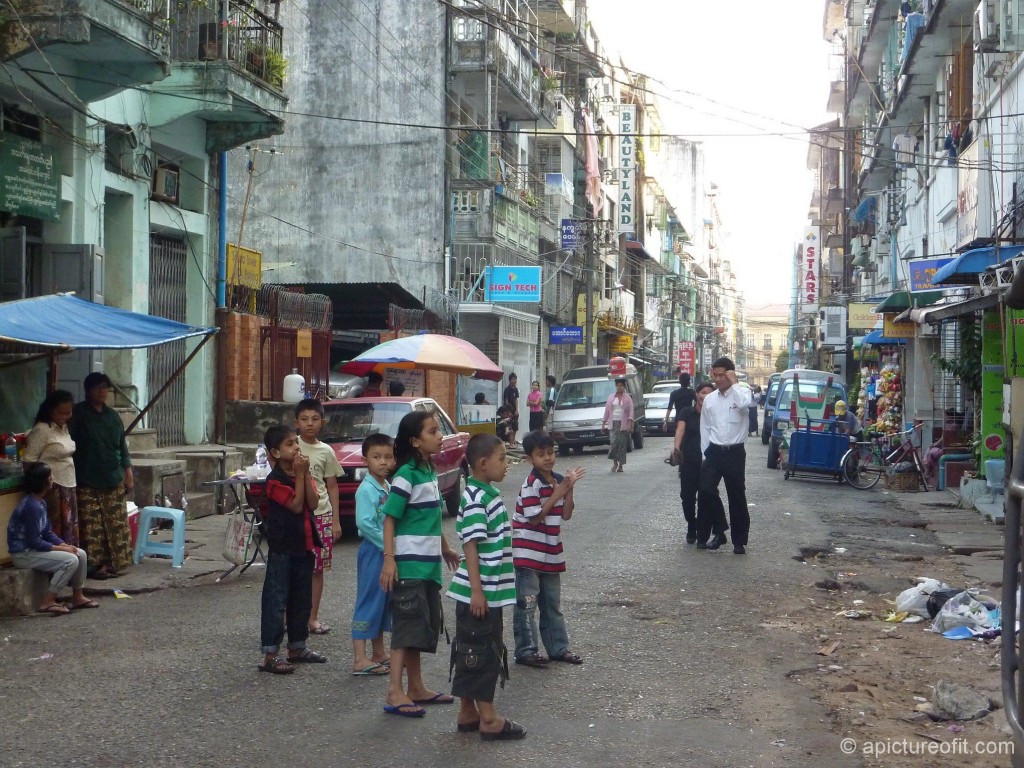
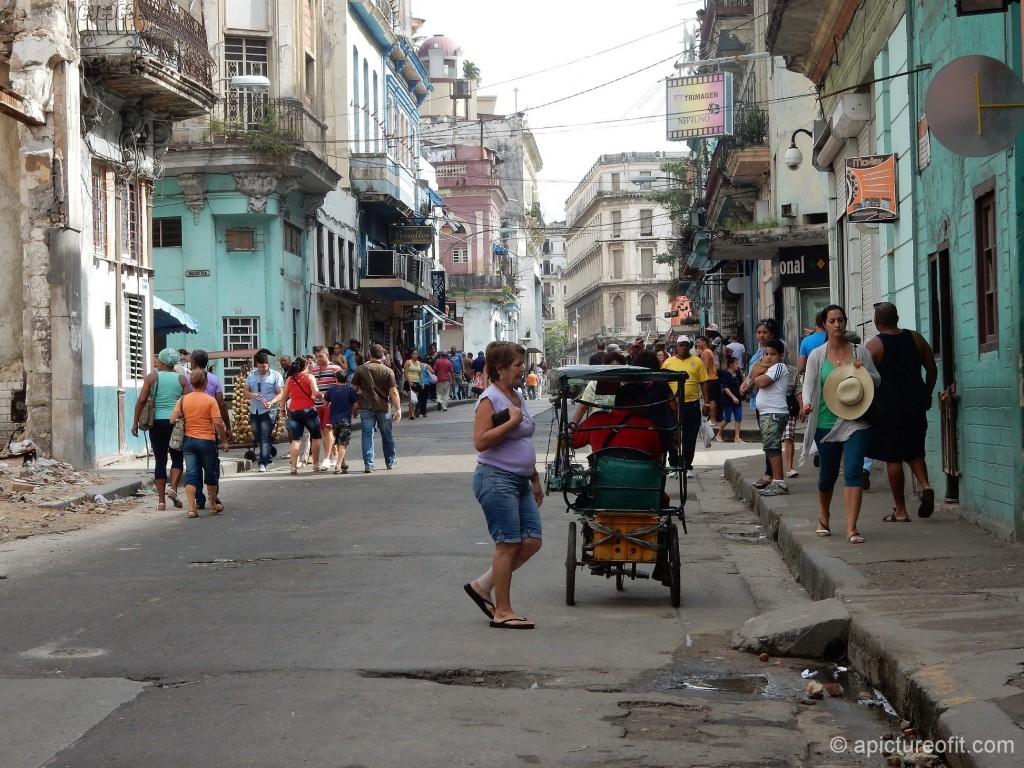
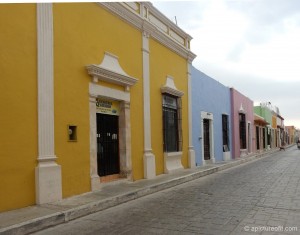




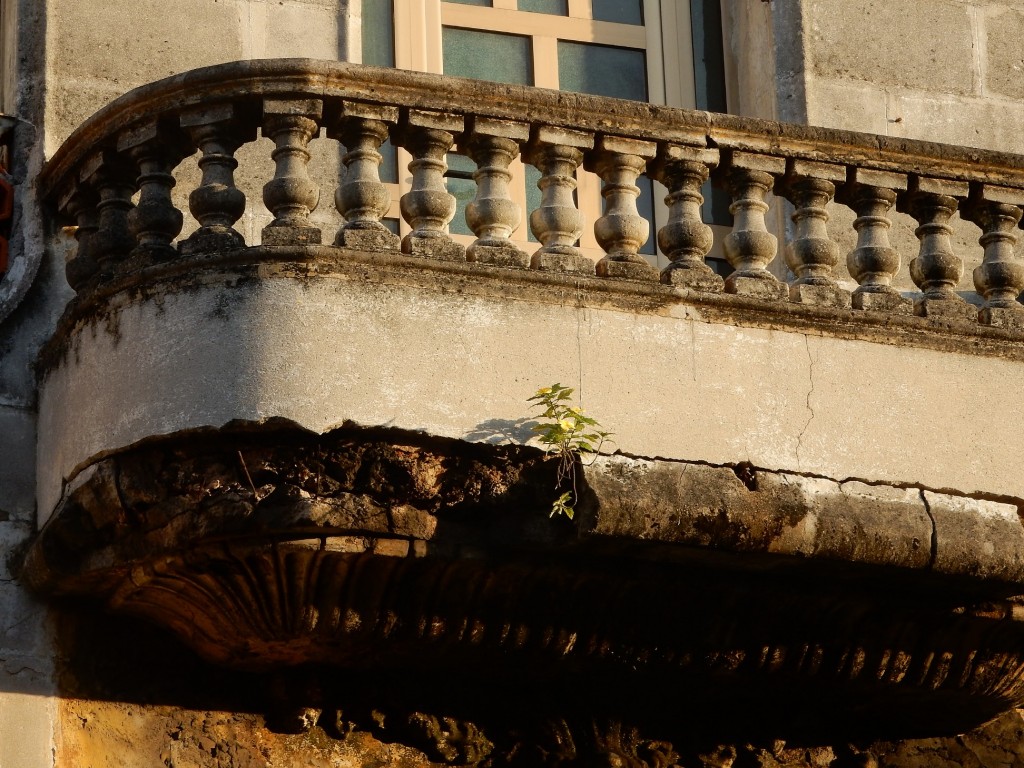
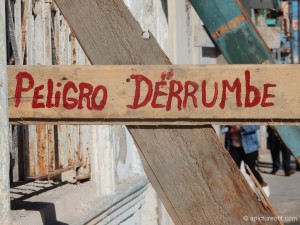
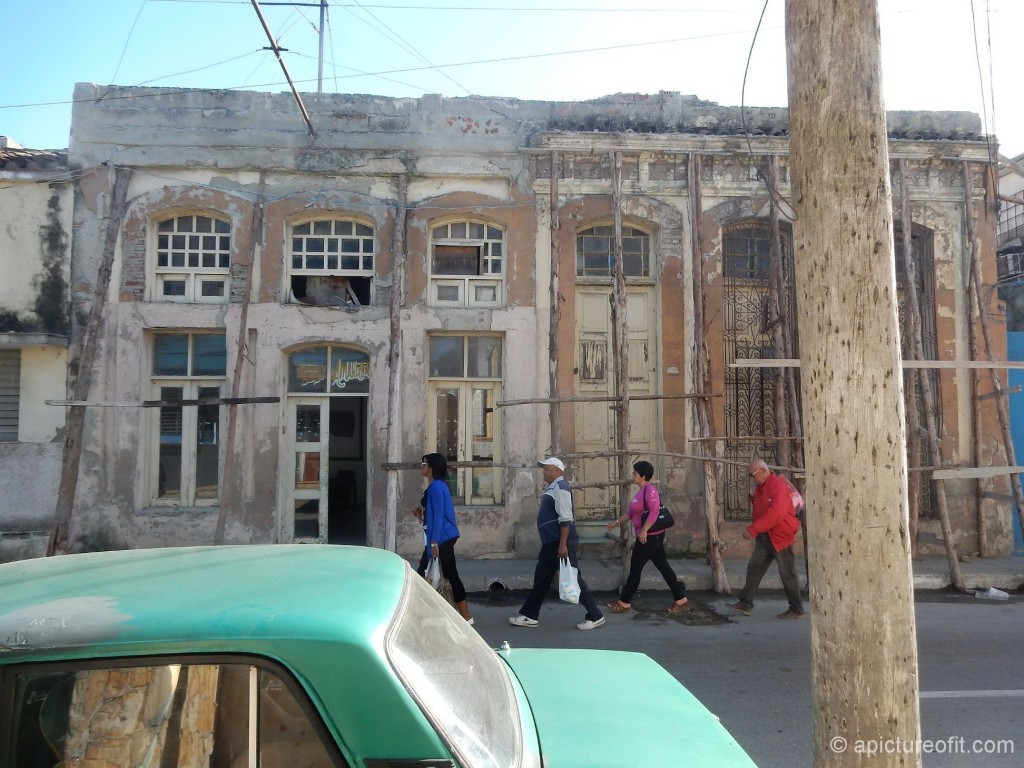
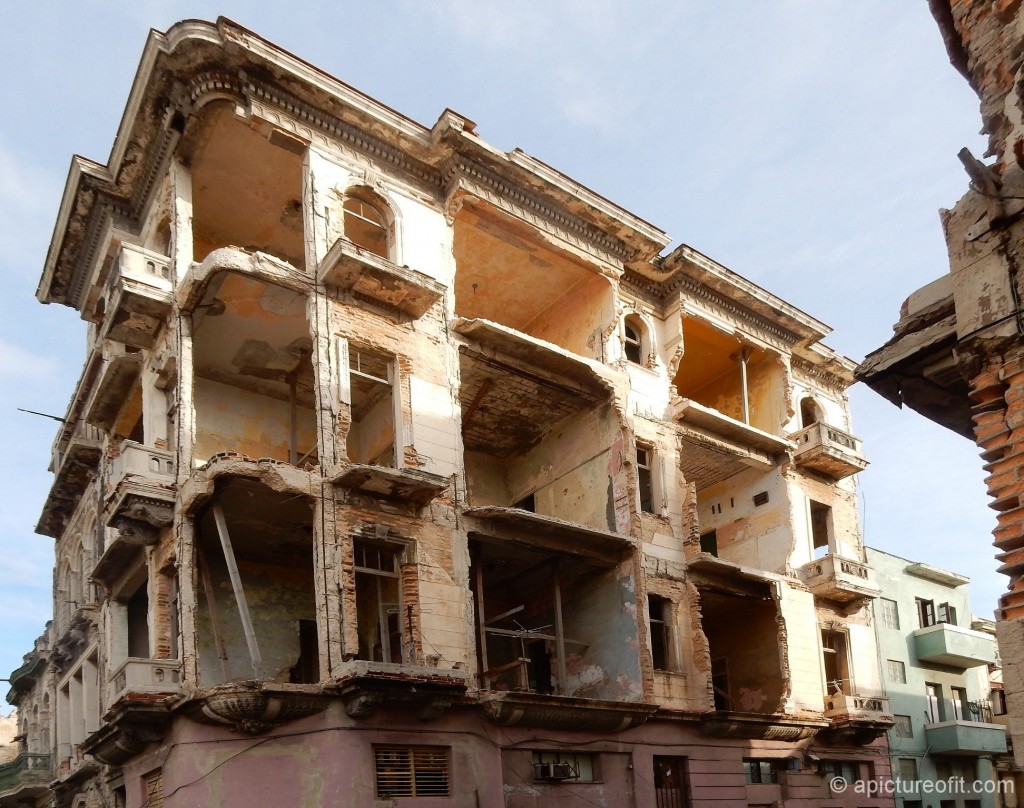

Good stuff, can’t wait.
Peter, I am looking forward to reading your eventual trip reports!
It appears that access to food in Cuba depends upon whether you grow it yourself or have connections to tourism. We ate like —pardon the pun — kings at our hotels and in the many
Beautifully written piece. I’m fascinated!